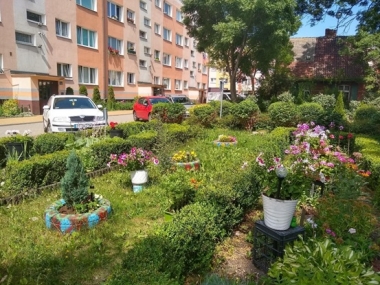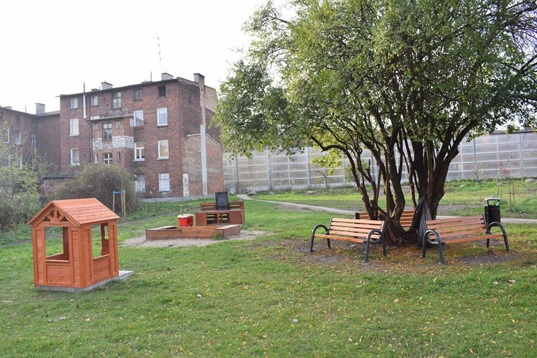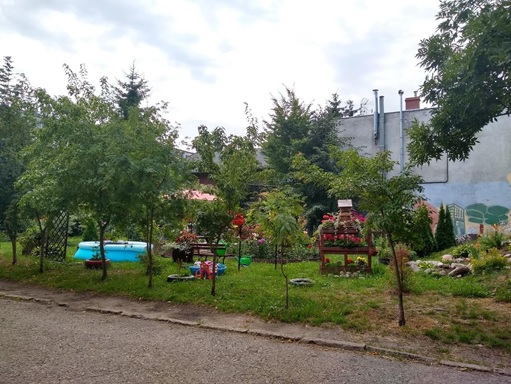Backyard metamorphosis in Gdansk
Edited on
03 March 2022Revitalisation of backyards in Orunia District

One of the most important activities involving residents in the planning and managing of common spaces in Gdansk was a project to revitalize backyards. Five backyards in four revitalized parts of Gdańsk were transformed. The activities, in which the residents were actively involved, were coordinated by non-governmental organizations selected through a competition. The backyard project lasted two years.
The competition for NGOs was announced in early 2018. At that time, five backyards were selected that needed to be cleaned up and re-designed. One of them was the backyard at the Ubocze building, where the Gdańsk Foundation for Social Innovation operated.
The projects of non-governmental organizations were prepared in such a way that all the residents were involved in the activities - from children to seniors. Engaging residents in cooperation was the main goal of the projects and at the same time the most difficult part of them.

Figure 1. Backyard in Orunia, source: brg.gda.pl
Residents planned changes together, cleaned up the area, planted greenery, and installed benches. At the same time, various activities: workshops, and meetings were held which provided an opportunity for neighborhood integration.
The NGO began its work by informing the residents about the project. It did not take the easy way out by sending out leaflets. It knocked on every door and contacted every resident of the Ubocze building.
The Foundation for Social Innovation and its leaders emphasized that for the adult residents of Ubocze the backyard was an important place in their youth, where they grew up and made new friends. Today, however, the backyard has become a parking lot for cars instead of a safe place for fun and integration for residents.
Of course, all changes planned in the yards had to take into account the budget of the entire project (about 35 000 PLN per backyard), as well as legal and formal requirements. Residents were able to decide what role the backyard would play: whether to create a space for children, a dog run, a new sidewalk, or plant greenery outside their windows.

Figure 2. Backyard in Orunia, source: WRS archive
Once the residents had decided what the revitalization of their backyard should look like, the architect got to work. Over the summer, he developed a project, taking into account the recommendations of residents. Then the architect's project was presented to the residents and consultations were held once again.
Interestingly, some of the work was done by hired companies, but e.g. planting plants and simple constructions like benches were done by residents. In the backyard at Uboczu mainly young Orunia residents grabbed shovels and rakes since many children live in the building.
As a result of these works, first of all, the backyards have been cleaned up. On some of them designated parking spaces appeared. Garbage cans gained aesthetic shelters or additional containers for waste segregation. Benches were installed, more greenery was planted, and two backyards received rain gardens. Backyards in other districts were decorated with artistic works of residents (ceramics and murals). Practical rainwater tanks were also installed in Orunia. In autumn 2019, the work on all backyards was completed. Now the biggest challenge is to preserve the effects of the backyard transformations.
The activities were carried out as part of revitalization projects coordinated by the Gdańsk Development Office. They were financed from the city budget and the European Regional Development Fund under the Regional Operational Programme of the Pomeranian Voivodeship for 2014-2020. A total of PLN 692,000 was earmarked for backyard activities.

Figure 3. Backyard in Orunia, source: WRS archive
 Submitted by Laura Socci on
Submitted by Laura Socci on
